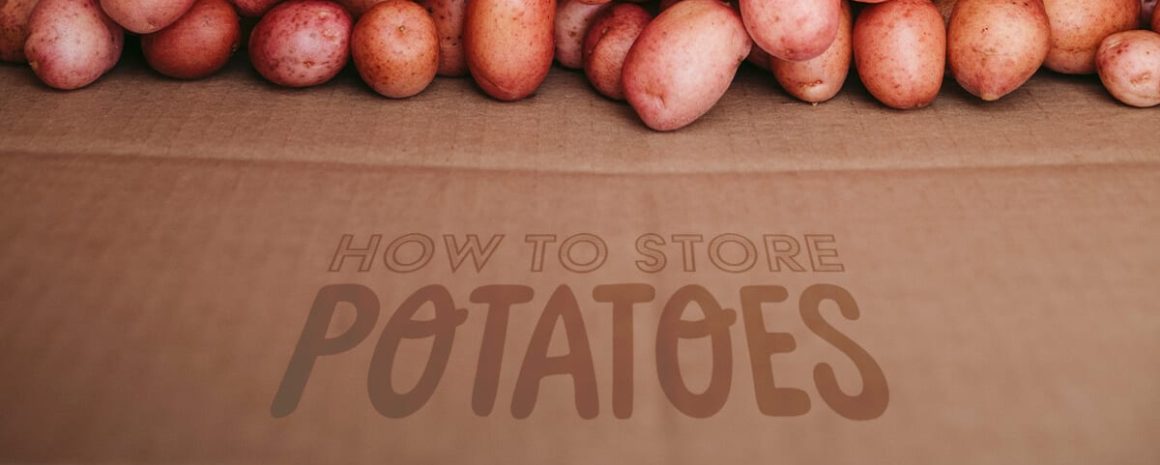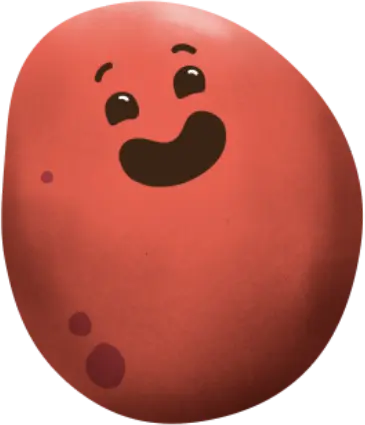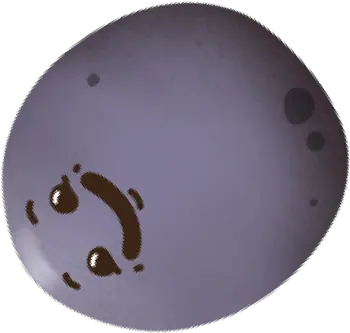Storing Little Potatoes properly is essential for maintaining their freshness, taste, and nutritional value until you’re ready to cook with them. Potatoes are a forgiving vegetable when it comes to storage, but keeping mindful of temperature, humidity, and light exposure is key.
So, what’s the best way to store your potatoes to keep them fresh and delicious? This guide provides a deep dive into everything you need to know about keeping your Little Potatoes fresh.
Where to store little potatoes?
The best way to store Little Potatoes to extend their freshness is in any cool, dark, and dry place away from direct sunlight, such as your pantry (no need to keep them in the fridge).
The Importance of Proper Storage and Common Storage Challenges
There are two common battles that you may face when storing potatoes—potatoes growing sprouts and potatoes turning green.
Maybe this has happened to you before:
- You had a good look at the potatoes through the package at the store. They looked nice, fresh and definitely not green!
- Then you returned from the grocery store with a fresh bag of your favorite potatoes, and you want to make sure they stay fresh.
You lovingly place them in the cool and dark corners of your pantry…and then immediately forget you ever bought them.
Time passes, you begin to have that feeling like you’ve forgotten something, and then the next time you organize your cupboards, you realize what’s happened.
Your beloved potatoes have started growing strange, coral-like clusters that don’t look entirely edible.
In fact, they look more like they belong at the bottom of the ocean than in your stomach.
After quickly tossing them out, you vow that the next time you bring home a bag of Little Potatoes you will keep them out of the dark.
When you purchase your next bag of potatoes, you opt to keep them in a well-lit spot in your kitchen.
“They shall not be overtaken by sprouts this time!” You declare triumphantly, as you relish in your victory over the tiny aliens emerging from your produce.
When Green Is Not Your Best Color. Why Little Potatoes Sprout and Turn Green
As the days pass, you start to notice your potatoes shape-shifting again, but this time they’re not sprouting, they’re changing color.
What was once a healthy and earthly hue is now a vibrant, borderline offensive shade of green.
“What is the meaning of this strange metamorphosis?!” You demand of the heavens, crying out in anguish. How are you supposed to find victory in this eternal potato battle between light and dark?! Where is the happy medium? Will you ever enjoy potatoes again?!
If this speaks to your battle-weary soul, fear not.
As it turns out, there are perfectly natural and logical explanations for potatoes sprouting limbs and looking like they’ve been infused with plutonium.
And what’s more, there’s a perfectly realistic way of storing your potatoes.
Why Do Potatoes Sprout?
Fun fact: Potatoes don’t actually need soil to sprout—they just need favorable environmental conditions.
So, if you keep your potatoes somewhere warm and they have access to moisture, they will joyously begin to spread their sprouts and grow.
There’s no harm in cooking with potatoes that have sprouted if you remove them before you cook. However, the more sprouts that grow, the more depleted their nutritional value becomes.
Why Do Potatoes Turn Green?
If you’ve ever kept your potatoes in a brightly-lit place, you may have experienced this.
When potatoes are exposed to too much fluorescent light, they will turn a surprisingly vibrant shade of green.
This happens because of chlorophyll being produced inside the potato, which isn’t necessarily bad, but it can also cause toxins like glycoalkaloids to reproduce.
When this happens, it’s best to just find your nearest compost bin and let them move onto a better life in the soil.
Are Sprouted Potatoes Safe to Eat?
Green sprouts, green skin, and “eyes” on potatoes indicate exposure to light, causing them to make glycoalkaloids.
A bit of this stuff could be good for you, like helping lower cholesterol or soothing inflammation, as mentioned in the Encyclopedia of Food and Health. But, too much, and it’s not so great for you.
If you see tiny green spots or little sprouts, you can just snip those parts off before you cook them.
But if there’s a lot of green or the sprouts have taken on a life of their own, it’s best to throw those potatoes out.
How To Store Potatoes And Win The Eternal Battle Of Light And Dark
The answer is easier than you might think—and doesn’t require you to become a self-proclaimed warrior against potato-kind. Turns out that storing your potatoes in a cool, dark, dry place is ideal!
A temperature of around 38°F or 3°C is the ideal way to keep your potatoes cool and out of direct light until you’re ready to cook them.
This is especially true for Little Potatoes, which come pre-washed and ready to eat.
Keep your potatoes in a visible spot in your pantry, so you don’t forget they’re there.
By keeping those spuds in your sights you can turn them into something delicious the whole family will enjoy.
Learn more about where our Little Potatoes come from here
Extra Questions From Curious Family Cooks
Should I Separate Little Potatoes from Certain Produce?
Store potatoes separately to avoid flavor contamination and spoilage.
- Do not store potatoes and onions together as gases from onions can speed up potato sprouting. This goes for garlic, as well.
What Is The Best Container To Store Potatoes In?
Our pre-washed and ready-to-eat Little Potatoes come in carefully perforated bags with just the right amount of ventilation to keep them healthy and fresh.
Keep them in their original packaging in a cool, dark place, and consume them within the recommended timeframe for the best quality and taste.
Is It Good To Freeze Raw Potatoes?
The United States Potato Board says that storing potatoes at “colder temperatures lower than 50 degrees, such as in the refrigerator, causes a potato’s starch to convert to sugar, resulting in a sweet taste and discoloration when cooked.” So, it’s best to steer clear of freezing if you’re looking to store raw potatoes.
You should only freeze cooked or partially cooked potatoes.
Why? Raw potatoes have a high water content, and when you freeze them, that water turns them into a mushy, grainy mess when thawed.
So, if you want to freeze your potatoes, make sure to cook them first. You can boil, bake, or even fry them before popping them in the freezer.
This way, when you defrost them, they’ll still have that delicious potato texture and flavor.
How Long Do Little Potatoes Last On The Counter?
Avoid leaving your Little Potatoes exposed on the countertop.
Instead, tuck them away in a drawer, nestle them in a cozy basket, stash them in a closet, slide them into a paper bag, or place them in a bamboo vegetable steamer—essentially, any spot that’s shrouded in darkness. Never under the sink!
How Do You Store Potatoes For Longer At Home?
You can try these innovative storage techniques
- Freezing your little potatoes can really help them last longer. Just blanch them first to keep their texture and taste good, then spread them out to freeze before popping them into airtight containers.
- Using a vacuum sealer can also make your little potatoes last way longer by getting rid of the air and slowing down bacteria growth. It’s perfect for anyone who likes to buy in bulk and stash their spuds away.
Reminder: These tips are all for whole, uncooked potatoes. Leftover cooked potatoes should be stored in the fridge and eaten within three to four days.
Do I Need to Clean Little Potatoes Before Storing them?
All our Little Potatoes are pre-washed, so no need for extra cleaning!
Ready to get cooking?
You can find all our favorite recipes at our Recipe Center.
Not sure where to start? Try our Chicken Pot Pie Soup for a hearty family dinner recipe. Or, if you’re looking for something a little lighter, try our Herbed Potato Salad for a fresh and tangy side dish.



